-
Seven Sister Falls Site
-
The CHTTC site is located downstream of the Seven Sisters Generating Station on the Winnipeg River. It is a man made channel composed of granite bedrock. The channel is more than 1 km long and the average width of the channel is about 60 m. The average depth of the channel is around 11 m, however, the depth can fluctuate by as much as 1.5 m. The velocity range in the channel is typically between 1.5 m/s and 2.5 m/s; on occasion, a 3.1 m/s velocity has been measured at the site. Seasonal velocity changes are due to precipitation, but the daily velocity changes are the result of peak electrical loads and power generating adjustments at the upstream dam.
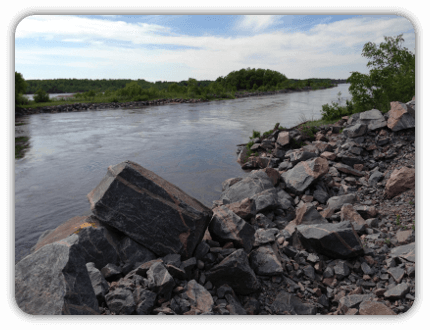
-
CHTTC Site
-
Office and Storage Sea-Cans
-
Two sea-cans are located on site for use during measurement, monitoring and deployment activities during the CHTTC active season. One is used to store equipment for all activities, from measurement devices to hand tools, to power equipment to steel and Amsteel cables and ropes. The other is set up as an office for deskwork and has access to electrical power, a refrigerator, air conditioning, CHTTC safety documentation, a computer and internet to send or receive data and emails..
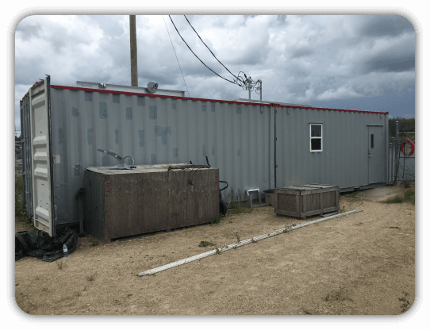
-
-
Locked Compound
-
At the CHTTC, the main compound, 25 feet by 30 feet, is surrounded by a 8 foot high fence which is topped with barbed wire for security. Inside is located the equipment and office containers. There is space inside of the compound to store a boat that is not in use, so as to keep it in a secure location. Additionally, this space has been used to store monitoring containers for turbine manufacturers. A manufacturer who wishes to monitor the output of an operating turbine has the space to set up a station to receive and monitor power from their operating turbine. Finally, the fence surrounding the turbine is strong enough to be used to secure docks, boats and moored turbines as needed.
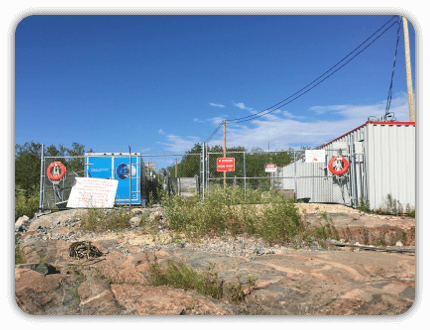
-
-
CHTTC Storage Area
-
Outside of the CHTTC compound exists a section of land that is suitable for storing turbines. This area is out of the way of vehicle traffic, yet easily accessible once on site. This area allows for the construction, maintenance and tear down of any large device, such as a hydrokinetic turbine, without having to leave the CHTTC. In times when there are no devices on site, this area can be used for spare parking if a large amount of visitors are coming to view the CHTTC. Additionally, this area can be used to store boats that are not in use.
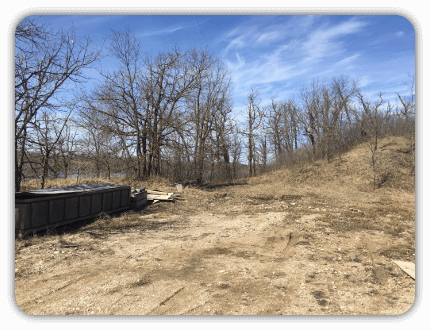
-
-
Jackfish Bay Launch Site
-
The launch site is the preferred location to launch all CHTTC watercraft. It offers a path to drive a pick-up truck down to the water, a clearing large enough to turn the truck around and a slowly sloping shore which allows for easy deployment of a watercraft. Retrieval is performed here as well of watercraft is performed here as well. It even allows for large watercraft, such as pontoon boats, to be deployed. Deployment of small turbine units can be performed here as well, as long as the turbine unit fits on a trailer.
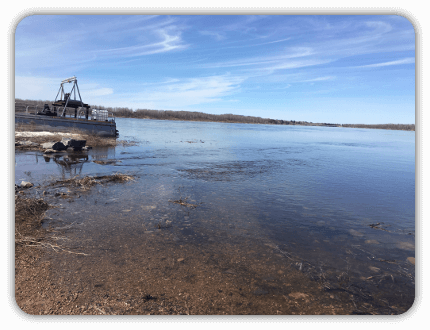
-
-
Anchor Point A
-
Anchor point A is an anchor point designed to support a hydrokinetic turbine. Multiple surface-mounted turbines have been deployed at this location. This anchor point is the most upstream anchor point and boasts the fastest flow velocities of the three turbine anchor points. The anchor is installed in the shore, with a chain attached. Attached to the chain is a mooring line, which is used to moor any turbine that is placed here. The chain is put on to ensure the line sinks close to shore, so as to not endanger the propeller of approaching watercraft. This anchor point is ideal for surface-mounted turbines.
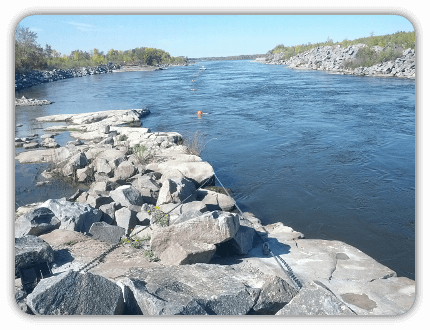
-
-
Anchor Point B
-
Anchor point B located downstream of anchor point A and upstream of anchor point C and it can be identified by a solitary tree protruding from the shoreline. Featuring a sub-surface concrete anchoring system this location is ideally set-up for mounting a bottom mounted within the flow, however, this anchor position can also be equipped to handle surface mounted turbines as well.

-
-
Anchor Point C
-
Anchor point C is the furthest downstream turbine mooring location at the CHTTC. This location uses three bottom-mounted, concrete anchor blocks to provide the holding force required to moor a hydrokinetic turbine. Each of the three anchor blocks has a line attached to a buoy, for block location and retrieval when needed. Each of the anchor blocks is connected to a line, which is attached to a common D-ring. This D-ring is the central ring upon which all of the loads are transferred. Buoys are attached to the D-ring to prevent it from sinking. A mooring line is then attached to the D-ring, the opposite end of which can be attached to a surface-mounted hydrokinetic turbine.

-
-
Shoreline Anchors
-
At the CHTTC, along both shorelines, are located multiple rock anchors. These anchors are installed by drilling into the shore rock, hammering in a threaded insert and threading a metal loop into the anchor insert. These anchors are used for many purposes. They can be used during resource characterization, to hold the measurement platform steady. They can be used to deploy marine cables, or to anchor boats while shore expeditions are occurring. The anchors are capable of holding large loads while being compact. All shore anchors are marked with spray paint so that they are easily identified and to reduce any potential tripping hazard.

-
-
Manitoba Hydro Grid Connection
-
At the CHTTC site companies have access to the Manitoba power grid. A bi-directional meter offers the ability to both deliver and receive electricity from the grid. Being able to deliver electricity to the grid allows for hydrokinetic turbine developers to fully test their devices by having a location to deliver energy to, as well as a meter to be able to measure the amount delivered. On the other hand, having access to the grid allows for reliable electricity to power equipment and instruments to facilitate any testing requirements.
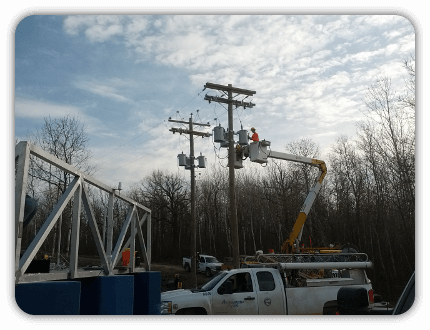
-

